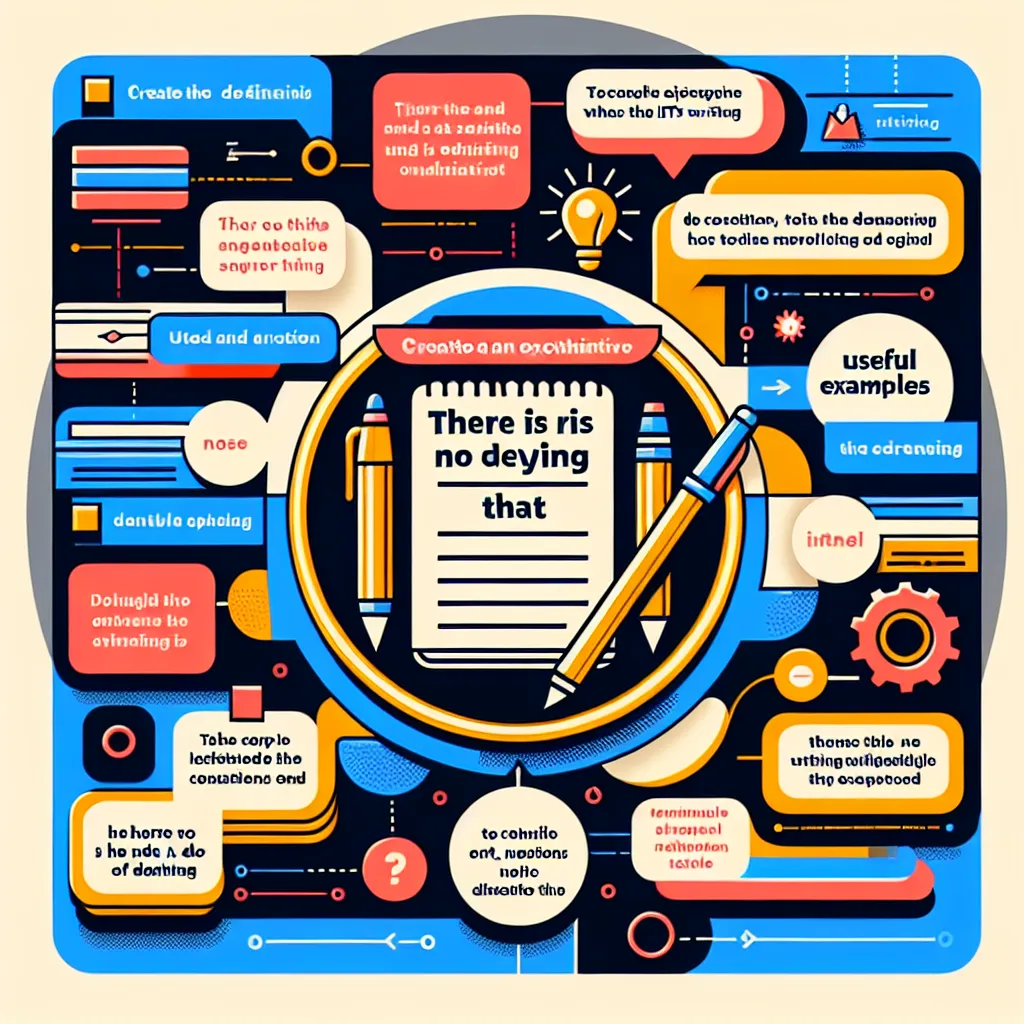“There is no denying that” is a powerful expression often used in formal writing and speaking, including IELTS essays and speaking tests. This phrase is particularly useful for introducing undeniable facts or widely accepted truths. Let’s explore how to use this structure effectively in your IELTS preparation and exam.
Understanding the Meaning and Usage
“There is no denying that” is an idiomatic expression used to emphasize a point that is considered undeniable or indisputable. It’s equivalent to saying “It cannot be denied that” or “It is undeniable that.”
In IELTS contexts, this phrase appears frequently in Writing Task 2 essays and Speaking Part 3 discussions, where candidates are expected to express opinions and discuss complex ideas.
Examples:
- There is no denying that climate change is a global concern.
- There is no denying that technology has revolutionized education.
- There is no denying that social media has changed the way we communicate.

Grammar and Structure
The structure of this phrase is:
There is no denying that + [subject] + [verb] + [rest of the clause]
It’s important to note that the clause following “that” should be a complete sentence. The verb in this clause is typically in the present simple or present perfect tense, but other tenses can be used depending on the context.
Examples:
4. There is no denying that students face increasing pressure in today’s competitive academic environment.
5. There is no denying that the internet has transformed the way we access information.
Using in IELTS Writing Task 2
In IELTS Writing Task 2, this phrase can be particularly effective in your introduction or when presenting a main argument. It helps to establish a strong, assertive tone in your essay.
Example paragraph:
There is no denying that the rise of online shopping has significantly impacted traditional retail stores. While e-commerce offers convenience and often lower prices, it has led to the closure of many brick-and-mortar shops, changing the landscape of our high streets. This shift has both positive and negative implications for consumers and the economy at large.
Enhancing Your IELTS Score
Using “There is no denying that” correctly can contribute to a higher score in the ‘Lexical Resource’ and ‘Grammatical Range and Accuracy’ criteria of the IELTS Writing and Speaking tests. However, it’s crucial to use it appropriately and not overuse it.
For Band 7 and above:
- Use the phrase accurately and in context
- Combine it with other complex structures
- Follow it with well-developed ideas and examples
Example for Band 7+:
There is no denying that the globalization of cuisine has broadened our culinary horizons. This phenomenon, characterized by the increasing availability of international ingredients and the fusion of cooking styles, has not only expanded our palates but also fostered cultural exchange. For instance, the popularity of sushi in Western countries has led to a greater appreciation of Japanese culture and traditions.
For Band 6:
- Use the phrase correctly but with simpler follow-up sentences
- Ensure the overall argument is clear
Example for Band 6:
There is no denying that pollution is a major problem in many cities. It affects people’s health and quality of life. Governments need to take action to reduce pollution levels.
Common Mistakes to Avoid
-
Incorrect verb form after “that”:
Incorrect: There is no denying that climate change affecting our planet.
Correct: There is no denying that climate change is affecting our planet. -
Using it too frequently:
Overuse can make your writing repetitive and less engaging. Aim to use this phrase once or twice in an essay, if at all. -
Following with an opinion rather than a widely accepted fact:
Be cautious about using this phrase for controversial or debatable points. It’s best used for statements that are generally accepted as true. -
Forgetting to develop the point:
After using this phrase, make sure to elaborate on your statement with explanations, examples, or supporting details.
Alternative Expressions
To avoid repetition, consider these alternatives:
- It is undeniable that…
- One cannot dispute the fact that…
- It is indisputable that…
- It goes without saying that…
- It is widely acknowledged that…
Example:
It is undeniable that social media has transformed the way businesses market their products. Similarly, one cannot dispute the fact that online platforms have created new opportunities for small entrepreneurs.
Practicing in IELTS Speaking
In the IELTS Speaking test, particularly in Part 3, you can use this phrase to introduce your opinions on complex topics.
Example:
Examiner: How do you think technology will change education in the future?
Candidate: Well, there is no denying that technology will continue to play an increasingly significant role in education. I believe we’ll see more interactive and personalized learning experiences. For instance, virtual reality might be used to create immersive historical simulations, allowing students to ‘experience’ past events firsthand.
Conclusion
Mastering the use of “There is no denying that” can significantly enhance your IELTS performance, particularly in Writing Task 2 and Speaking Part 3. Remember to use it sparingly and appropriately, always following it with a well-supported argument or explanation. Practice incorporating this phrase into your essays and speaking responses, but also be sure to vary your language with alternative expressions. By doing so, you’ll demonstrate a sophisticated command of English, potentially boosting your scores in the lexical resource and grammatical range criteria.
For further practice, try using this phrase in essays on topics such as environmental issues, technological advancements, or societal changes. These areas often involve undeniable facts or trends that lend themselves well to this expression. Remember, the key is not just using the phrase correctly, but using it as a launching point for insightful discussion and analysis.